Twins, Triplets and Quadruplets: How These Moms of Multiples Mastered Baby-Led Weaning
In this episode we're talking about:
- the importance of essential fatty acids, particularly omega-3 fatty acids, for babies' brain and eye development.
- the need to provide these fatty acids through natural food sources rather than relying on expensive supplements.
- how to ensure babies receive adequate amounts from natural food sources to support their development.
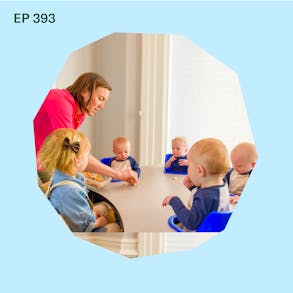
LISTEN TO THIS EPISODE
Episode Description
If you have a few mouths to feed at one time, then baby-led weaning is REALLY going to behoove you. In this episode we’re looking at the ways in which a baby-led approach particularly benefits families with multiples. We’ll talk about food swiping, when multiples are ready to eat on different timeframes, and how you can consolidate efforts to save time and money whether you’re feeding twins, triplets, quadruplets (or more!)
Links from this Episode
- Baby-Led Weaning with Katie Ferraro program with the 100 First Foods™ Daily Meal Plan, join here: https://babyledweaning.co/program
- Baby-Led Weaning for Beginners free online workshop with 100 First Foods™ list to all attendees, register here: https://babyledweaning.co/baby-led-weaning-for-beginners
Other episodes related to this topic:

Latest Episodes
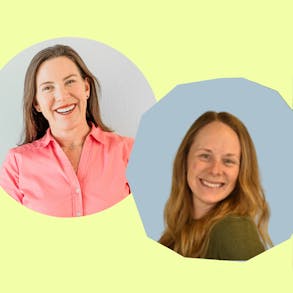
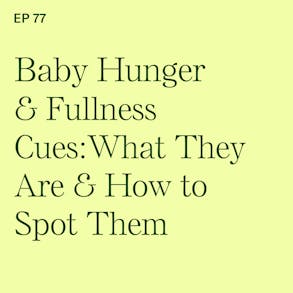
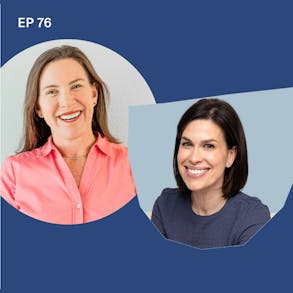
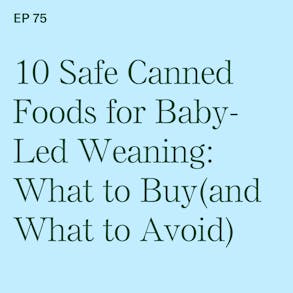
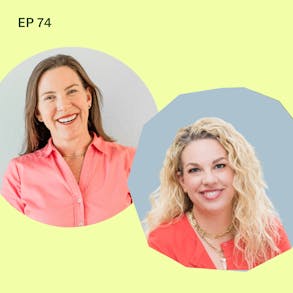
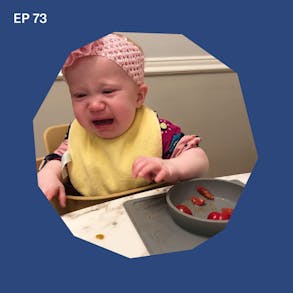
Katie Ferraro (0s):
If you're just starting solid foods, you might be confused about a few things I hear from parents all the time. So they'll see stuff on social media that is not only incorrect, but it's actually downright dangerous. So we hear about accounts that are recommending things like offering intact meat to your baby, like steak for early eaters, which is so dangerous. Or they'll show you how to prepare the foods, but they're doing it wrong and showing the wrong size of foods for that baby's age and stage. I know the food prep stuff for baby-led weaning can be confusing. And if you're confused or overwhelmed by the misinformation that you're seeing online about starting solid foods, I wanna invite you to join my free online video workshop called Baby-Led Weaning for Beginners. This is a 75 minute video training where I show you exactly how to prepare simple, safe, starter foods for your baby as well as what not to do.
Katie Ferraro (45s):
Plus, I give everybody on this free training a copy of my original 100 First Foods list so you'll never run out of ideas of foods your babies can eat. I am a registered dietitian specializing in baby-led weaning and feeding babies is all I do all day every day. Right now I'm working with my friend's baby Ezra. I'm actually going through my own 100 First Foods daily meal plan, streamlining all of the recipes. We're actually on food 76 to 80 now. He's getting so close to his 100 First Foods and I get so excited and love helping families give their babies a safe start to solid foods. But I also really enjoy debunking a lot of the misinformation that you see on social media accounts that are run by people who are not experts in Baby-Led Weaning. So I would love to teach you more inside of the Baby-Led Weaning for Beginners workshop.
Katie Ferraro (1m 27s):
You can sign up if you go to babyledweaning.co/workshop. This is a 75 minute training, so it does require a little bit of your time, but I promise you, you are going to walk away feeling inspired and confident in your baby's ability to eat real food. So you can take the training right now. If you're ready, you can do it later today or tomorrow when your baby is napping again, go to the sign-up page, babyledweaning.co/workshop and I hope to see you there. What are the best foods for your baby when you're starting Baby-Led Weaning? Now, there are no right or wrong foods for starting solid foods safely, but if you are looking for inspiration and ideas on foods your baby can eat. I have a free feeding guide called 10 Easy Starter Foods for Baby-Led Weaning that will give you a bit of a roadmap.
Katie Ferraro (2m 14s):
I packed this feeding guide full with two weeks full of new solid foods that your baby can eat. And I also include tips on how to make them safer in order to lower the choking risk. So you can download this free feeding guide. Again, it's called 10 Easy Starter Foods for Baby-Led Weaning. It has prep descriptions in there as well. Go to babyledweaning.co/resources. Again, that's babyled weaning.co/resources to download the 10 Easy Starter Foods for Baby-Led Weaning free feeding guide feeding. And so the mom was saying that with Baby-Led Weaning, one of the most important things was all of the babies could eat at the same time and they could feed themselves.
Katie Ferraro (2m 59s):
And this is huge because she had triplets and it was keeping all of them on the same schedule. And I know some of you are like a slave to the schedule if you just have one baby. But I know personally, when I had one baby, I didn't have a schedule. But when I had quadruplets and then twins, the schedule becomes everything. And so being able to get on a quick feeding schedule with the Baby-Led approach is so beneficial for the parents of multiples. Hey there I'm Katie Ferraro, Registered dietitian, college nutrition professor and mom of seven specializing in Baby-Led Weaning here on the Baby-Led Weaning made easy podcast. I help you strip out all of the noise and nonsense about feeding, leaving you with the confidence and knowledge you need to give your baby a safe start to solid foods using Baby-Led Weaning.
Katie Ferraro (3m 48s):
When I looked at my calendar and saw that we had an episode releasing on National Twin Day, it made me think, oh my gosh, we've never done an episode on the podcast dedicated exclusively to multiples. And I love multiples. I am a mom of multiple multiples. I have a set of quadruplets and a set of twins, and I also have a singleton, which I didn't even know that was a word until I had a set of quadruplets and a set of twins and she needed some sort of an identifier, so we had one baby, then four and then two all for a while there had seven kids, three and under. Thankfully they're a little bit older and more manageable at this point. But I wanted to do an episode dedicated to the benefits of the baby-led weaning approach when starting solids.
Katie Ferraro (4m 34s):
If you have twins or triplets or quadruplets or go on from there. I don't actually know any quintuplet or beyond families who've done baby-led weaning, but I actually know a fair amount of quadruplet families because we kind of have this online network and community supporting each other because from the second you find out you're gonna have quadruplets, it's insane from the second you find out you're gonna have a baby no matter how many are in there, it's insane. And you're looking for ways to make your life easier. And baby-led weaning helps do that. So in today's episode, I wanna cover a couple of reasons why you might consider Baby-Led Weaning if you have multiples, and for those of you who are on the fence about it, why you might consider this over conventional adult-led spoon feeding.
Katie Ferraro (5m 15s):
And I wanna talk a little bit about time. So we're gonna talk about efficiency and independence and how we synchronize mealtimes. I wanna talk about physical development, how this approach encourages developmental skills and promotes healthy eating habits. I wanna talk a little bit about family bonding and then a couple of considerations that are specific to having multiples and tell you a couple quick stories from families who have succeeded with baby-led weaning for twins, triplets and quadruplets. Now, when we look at the benefits of the approach, the benefits to the baby-led approach, they're not different if you have twin, triplets or quadruplets like these extend across singleton's as well. And we've talked a lot about the baby-led approach for children that have feeding difficulties also. But when we're talking about time efficiency and independence, the baby-led approach promotes self-feeding and the babies feed themselves from the start.
Katie Ferraro (5m 59s):
And I remember one of the reasons why I was so interested in doing this approach, even though I knew nothing about baby-led weaning when my quadruplets were babies was because I had struggled so much with spoon feeding. My oldest and a colleague had told me about Baby-Led Weaning because I was like, I can't spoon feed the one baby I have at home. Like how am I gonna feed these four babies when they start solid foods like don don't have the physical capacity to spoon feed for different babies. And so being able to synchronize mealtimes with Baby-Led Weaning, the multiples can eat together at the same time, making the mealtime more efficient and more synchronized, saving parents valuable time and streamlining that feeding process. And I know a lot of you with singleton babies are all about the schedule, but I did not have, like I was not a slave to the schedule when I had one baby, but then when I had the four babies when my other child was 1-year-old, oh my gosh, the schedule was everything.
Katie Ferraro (6m 51s):
And so being able to save time and everything was on a schedule, baby-led weaning just made sense versus like trying to randomly find time to force feed a baby by spoon. With regard to saving resources, the baby-led approach can also be more cost effective. As you don't have to purchase commercial baby food. You essentially get to a point where your babies are eating modified versions of the same foods that the rest of the family is eating. So not having to buy these commercial baby foods and being able to incorporate foods that your toddler, your partner yourself are already eating, certainly not only saves time but also saves resources. So I firmly believe that for multiples, the benefits are compounded there. With regards to you don't have a lot of time and, you don't have a lot of resources, the baby start eating up all of it.
Katie Ferraro (7m 33s):
Baby-Led Weaning can help you gain some of that back. From a developmental standpoint, we know that baby-led weaning helps encourage developmental skills. So it helps support the development of fine motor skills and hand-eye coordination and your baby's ability to chew and learn how to swallow. And so you're watching these milestones simultaneously. And if I can say or share anything from my own personal experience, it was really the knowledge that not all babies get ready to start solid foods at the same time. And I share a story about one of our quadruplets. My quads are three boys and one girl. They were born at 34 weeks gestation. so we waited until they were six months adjusted age. So that means six months plus six weeks 'cause they were born six weeks early when they were six months old. They were really only physiologically like four and a half month old babies.
Katie Ferraro (8m 13s):
They were not even sitting up on their own, they were not ready to start solid foods. Fast forward six more weeks when they were seven and a half months age, which was their six month adjusted mark was when they started to sit up on their own. And I waited until all of them were sitting together. And that's, that's my recommendation for family with multiples is that if you wanna get them on the same schedule, wait until they're all ready to start. So sometimes you'll have one that's maybe sitting on their own one or two weeks ahead of the other ones. If you wanted to start with that one, I mean you technically could, but babies aren't safe to eat until they are sitting on their own and reach that six month or six month adjusted mark. And I don't like doing different things for different babies. If we're gonna do it all together at the same time, we're gonna wait. And so I encourage families to do that as well because one or two extra weeks really isn't a big deal. Now if one of the babies is significantly developmentally delayed and the other one is typically developing, then yeah, you might have to have different timelines.
Katie Ferraro (8m 59s):
But if they're both on the same developmental track, then my suggestion is to make your life easier, start at the same time, start the new foods mealtime at the same time, move to the new foods, move to the new allergenic foods, do it all on the same schedule. With the baby-led approach, the parents of multiples are watching and witnessing these developmental milestones that are happening simultaneously, theoretically. So with the case of our quadruplets, one of them was just not interested in participating, even though he could sit on his own, I would sit him at, we had a quadruplet feeding table at the time, so I'd put all four babies in the the little table. They have like these little kind of sunken seats that they would sit in and he would just put his head down the one. And for the first almost six weeks he didn't participate in meals. And the other babies were like the same age.
Katie Ferraro (9m 39s):
Everything else was the same. They were picking up the food. And I remember thinking like, oh, like is something wrong with him or, and like it got to the point where it's like, oh, maybe something is wrong with him. And at this point I was trying to figure out baby-led weaning on my own. And at that time there was lots of resources about what baby-led weaning was, but nothing on like how to do it safely and how to make the foods properly. And I was like, gosh, what am I doing it wrong? But the point was he wasn't even like picking his head up or wanting to touch the food, but at about the six week mark, so we, he was nine months chronological age. So seven and a half month adjusted mark was when he first became interested, put his head up and started picking up the foods. He was always a little bit behind his siblings, but he was on a little bit of a different developmental timeframe. And it was interesting for me to see like, oh, okay, I was getting to the point where I was gonna get worried, but at that point he showed me that he was ready to eat.
Katie Ferraro (10m 24s):
And so watching them kind of do things at different phases, it kind of reminded me, gosh, their entire life, they're not all gonna do everything exactly the same just because they came out of me all within one minute of each other. So from a developmental standpoint, I like that babies have the opportunity to practice with those fine motor skills. And one thing, those of you who have multiple children who are listening, whether they're born together or not, there's always that underlying feeling. You're getting pulled in two or more different directions like, am I giving this baby enough attention? Am I spending enough time with this baby? Is this baby getting enough practice with the fine motor skills? And allowing the babies to participate in the full sensory experience that is learning how to eat is so important for them to develop those independent skills. Another thing that I think is especially important for families of multiples is the family bonding that occurs when you'd undertake a Baby-Led approach to starting solids.
Katie Ferraro (11m 12s):
Baby-led weaning encourages a family centered approach to meals. When you have multiples. You can engage in your twins, your triplets, your quads simultaneously. So because they're the ones essentially doing the work, you're doing the job, you know you're in charge of what the baby eats and when they eat and where they eat. That's Ellen Satter's, division of responsibility in feeding theory. okay, parents and caregivers, you're responsible for what and where and when the baby eats. But the babies are ultimately in charge of how much or even whether they eat. And so when you're sitting there together and you're setting the babies up for success because you took the time to seat them safely, to prepare foods properly to offer them on a set meal schedule, the baby then will have the opportunity to do their job, which is learning how to eat. And so we know from the family bonding standpoint this early exposure to a wide variety of foods early on, that the greater the number of foods and flavors and tastes and textures that babies have exposure to, the more likely they are to become independent eaters and the less likely they are to be picky eaters.
Katie Ferraro (12m 7s):
And that's important the more kids you have, the less capacity you have certainly to short order cook for different family members. There's also reduced meal prep stress on the primary meal preparer, which is probably you the mom. And with the baby-led weaning approach, you're offering age appropriate foods in a safe format. You don't have to go through all this rigmarole of of cooking food and then pureing it and then freezing it like you make the food and the whole family can eat it. Okay? And this is really advantageous if you have an already busy schedule. I also appreciate the flexible approach to this. So for families, again, I mentioned that sometimes the babies are gonna be on different developmental tracks. You might have different modifications of the same food for different babies, but you don't have to go make different food for all of the babies.
Katie Ferraro (12m 49s):
And then again, that ability to eat together at meals is so important. babies join in the dining experience with the rest of the family. It's a way for them to bond with their siblings and with their parents and their caregivers. It's helpful for families who want to create that sense of unity during meals.
Katie Ferraro (14m 47s):
Hey, we're gonna take a quick break, but I'll be right back. A couple of considerations that are specific to multiples. I mentioned earlier that not all babies get ready to start at the same time. Okay? Oftentimes we'll see one of the, I work a lot with twins. I've had triplets though we've worked with an even baby quadruplets other than my own quadruplets, but twins certainly the most numerous and the two babies will be getting ready to start solid foods and the mom will show me, listen, one of the babies is sitting up and the other one is not. As I mentioned previously, babies aren't safe to start solid foods until they're sitting on their own. And so if you think they're gonna be close with regards to when they're sitting together, my suggestion is to wait and start and start the foods at the same time so that you know and you can check it off. If you have my 100 First Foods list, sometimes the parents who print two copies of it, well one for one twin and one for the other.
Katie Ferraro (15m 30s):
But a lot of families just end up with one and the babies are eating the same thing every day. So one of the a 100 First Foods list, like they know, okay, today we started with avocado, then we did banana, then we did sweet potato, then we did lamb, then we did egg. And every day one new food a day, which is perfectly safe, both of the babies are all three or four or whatever are having the same food. And you can check those off as you go. Another consideration is that babies will oftentimes flip flop in their ability and their eagerness to eat when they're in pears or triplets, quadruplets, et cetera. So I give the example of my twins who were born when my quadruplets were about a year, they just turned two. And when we started solid foods, the quadruplets were two and a half and they were, they were unruly as two and a half year olds are want to be, especially when three of them are boys.
Katie Ferraro (16m 15s):
And I remember being so stressed out because like the quad would be making so much noise. And at that point I was teaching baby-led weaning full-time because with the quadruplets, we realized before they had turned one, that they had eaten 100 different foods with baby-led weaning. And I was like, I was already a dietitian. I said, this is, I mean monumental with the conventional adult-led approach. Most babies have only had 10 or 12, sometimes 15 foods if they've been spoon fed by the time they turned one. And here are the quadruplets who by the way started six weeks after like late 'cause of their adjusted age, still ate over 100 foods before the time they turned one. And it was such a transformative experience for our family that I decided to shift the entire focus of my nutrition career and do baby-led weaning and teach it exclusively. So by the time my twins were born, I had already had my 100 First Foods approach.
Katie Ferraro (16m 56s):
I was kind of molding it into a program we were having other families tested out and I was working full-time in the baby-led weaning space. So when the twins came ready to start, I was like, I'm definitely gonna fine tune, tweak that a 100 First Foods approach. I'd learned a lot more about safe food preparation. Created a lot of different techniques by that point. Kind of tried it out on them and then rolled it out and it, it was actually already had been a program that families around the world were using. And with the twins, I remember I had boy girl twins. The girl started out much stronger. She was much more interested in food, she was doing better with the textures, she was gagging less, not that that necessarily matters, but like she was more into it. She was getting more exposures and she was spending more time at each meal.
Katie Ferraro (17m 36s):
So her gagging became less frequent and less intense more quickly than her brother. And then at around the 10 month mark, she started to have some really severe constipation and she also had her 12 month mark or her appointment had had a low hemoglobin level and she wasn't eating as well. And I was a little bit concerned about her and noticed, oh my gosh, gosh, her brother is actually the one who's eating so much better to the point where like sometimes, and this happens with multiples, they will reach for and steal each other's food. Like I would turn around and turn back and like the boy had reached over and stolen the food from her. So sometimes you do need to separate the multiples a little bit because one will steal food from the other, which I guess isn't the end of the world. But I was really trying to focus on her and managing her constipation and which was kind of preventing her from eating well, which in turn was preventing her from eating iron-rich foods, which was part of why I actually declined the pediatrician's recommendation to start on iron pills because I didn't want to further constipate her.
Katie Ferraro (18m 27s):
so we did a really food focused iron food first approach for a couple of weeks pretty intensely with her. It did help get her hemoglobin levels back up. The constipation did resolve on its own and she went back to eating fairly well. But then from then on, like her brother was always eating more and to this point they're in kindergarten now and the boy, he's as big as my quadruplets who are in second grade. So people look at him and think that they're four boy quadruplets and she's normal sized for kindergarten. He's just always eaten more than her. But I always remind them when you guys started out, she actually ate more than you. So they'll flip flop back and forth. And, you might have that experience with your multiples as well. And then regarding the babies reaching for the other foods, one of our babysitters who was just an absolute lifesaver when the quadruplets were young, she was in high school.
Katie Ferraro (19m 8s):
I think I met her on Instagram, which sounds so weird to say now, but it's like back in the early days of Instagram where it's like, sure, you're 16, go everybody else and help me with the babies. She went to a school where she only went in person a couple days a week, like even pre pandemic so she could come over during the workday and help me, which was like amazing. And she's now graduated from college getting ready for graduate school. She still sits for us on occasion if we go outta town but she last summer got hooked up with a triplett family in our town. And so she's like, I had experience with quadruplets like getting the job watching the triplets was no big deal. She started solid foods with them. She did baby-led weaning. It was a the the triplets, both of their moms worked full-time and they like gave her a carte blanche to do baby-led weaning and 100 First Foods and for me to work with them as well.
Katie Ferraro (19m 50s):
It was so fun to like have all these triplett babies over and watching them steal each other's food was amazing. I mean they were just little thieves and they had had a, I mentioned the quadruplet table. They had had a triplet table hand me down. So these tables, if you look in like a preschool supply company, that's where I got my quadruple table from. They sell these tables where you can put a bunch of babies in at once and then traditionally in in daycare they're like spoon feed the babies that way. Or in preschool the the kids will eat themselves. The quadruple table we had, we got off a preschool supply store. The triplets that we, my babysitter was working with and I intern was working with, they had a handmade triplett table that someone had handed down. So it was like a straight line with the three babies together.
Katie Ferraro (20m 30s):
And, you can't move them. Like some of the other families I've worked with, they use four separate highchair. You can physically move the highchair away to keep the babies away from each other and not in a twin triplett or a quadruplet feeding table. I do wanna mention the tables 'cause I get lots of questions from parents of multiples. Like are they safe knowing now what I know, I would not have used a quadruplet table in the way that I used it for my own quads. The problem being that you drop the babies in these little buckets and basically their legs are dangling so they're not having their feet resting flat on a solid foot plate. With the triplets that we were working with, we just did a modification where, because it was a straight line triplett table, so three babies in in a row, we got a foldable bench just from Home Depot and I brought it to their house like measured, got the right size, put the bench underneath their feet underneath the triple table so their little dangling feet would then rest flat on the folding bench.
Katie Ferraro (21m 18s):
They were kind of different heights so we had to add like a book for one of 'em in which you just secure with a bunche cord, but it's a really easy fix. So I would've done some sort of modification like that for the quadruplet table that I had if I had to do it all again. And we actually passed our quadruplet table down. There was another family in San Diego who had quadruplets when my babies were about one and a half. So as they were growing outta the quadruple table, I, which large I gifted it to her. Oh my gosh, you guys as quadruple table was like the bane of my husband's existence for a while because when I started teaching baby-led weaning full time, I was doing a lot of traditional media. So like going to news stations and showing how the babies ate and explaining the 100 First Foods approach and showing how you make food safe.
Katie Ferraro (21m 59s):
We would drive, we have a sprinter van. My would drive all the babies, the babysitter would come with me and sometimes my aunt would come as well just to help like baby management. We'd get to the studio. My also, my older daughter wasn't even in preschool then, so we'd take her, I think the twins were infants. Sometimes I don't know. There was a lot of babies. And we would get to the Stevie station and my husband would bring the quadruplet table and the techs at the station like thought it was so funny 'cause he would like take it outta the van. I'm like, bring it into the studio and we'd set it up. But the visual again there of all four babies eating at once was really stunning. Especially on tv, like seeing them pick the foods up and feed themselves. But I look back now and I cringe because I see their little dangling legs and knowing so much more now. And we do know more about the benefits of having their feet resting flat on a solid foot plate. I would've done a modification of that.
Katie Ferraro (22m 40s):
So just kind of a tangent. And then my sister actually had twins that are the same age as my quadruplets. They're all in the same class. And they had a twin feeding table too. And one thing she absolutely loved about that was that it was so easy to clean up. You just take the little seats out, you just clean the table once instead of having to clean two or three or however many different high chairs. So I think the table can work if you have a footrest kind of modification that you do at home.
Katie Ferraro (24m 23s):
Hey, we're gonna take a quick break, but I'll be right back. As far as the other high chairs, I know the Nomi high chairs are very popular, the Tripp Trapp chairs, those are the two brands that I work with the most. I don't know if you guys know Lindsay Hay from Instagram. She is a real life friend of mine and quadruplet mom. She's in Florida now. When they, the babies were starting solid foods, her quadruplets, they were in New Jersey at the time and she had a set up with four different Nomis. I never did that like she started right with the Nomis. I think they had like a space consideration situation and we're like the Tripp Trapp and the Nomi are smaller footprint high chairs, so they're going to not take up your entire dining room if you're feeding multiple Babies. So I like them for that regard. And then when we graduated out of the quadruplet table, then we used an oval shaped table and all my kids were in Tripp Trapps around that and I had seven different Tripp Trapps around that.
Katie Ferraro (25m 11s):
Again, because the footprint is so small, you can get a lot of those chairs together. So that's the two of the reasons why I really like those high chairs. And I'll link both of those high chairs, both the Nomi high chair and the Tripp Trapp high chair. I think they're really, really good investments, whether you're dealing with one or multiple babies because they grow with your child. Both of those chairs were developed by the same designer. They both have adjustable seats and adjustable foot plates. So again, my kids are all school age. We have 7 Nomis as well. Those who are gifted by the brand. I do wanna mention that we use those for our dining room nook table. And then my kids use the Tripp Trapps for their homework, which is fantastic at a different table so that the feet resting flat, which is so important for the safe swallow when your Babies are little, continues to be important for toddlers and school aged children as far as safe swallow.
Katie Ferraro (25m 57s):
But also when they start schoolwork, having their feet resting on that foot plate really helps reduce fidgeting and helps them focus and concentrate. And so that's been kind of a godsend for us as we move into the homework years. So thank you to the triplets mom who contributed and their babysitter. Corey a little bit to this and Corey contributed a lot of great stuff to this episode because she's had experience now feeding twins, feeding triplets, feeding quadruplets. And she said, 'cause I asked her to, you know, can you write up just your assumptions or what you think aboubaby-led weaning now that you've worked with so many multiples? And she said, feeding so many babies at one time. I honestly don't think that any other option, the baby-led weaning would have worked when I was working with the triplets. They could all feed at the same time, which was huge because it kept them on the same schedule, which is so important for multiples.
Katie Ferraro (26m 42s):
And Corey appreciated that she could prep the foods ahead of time, often during their naps. And then having the food made and ready to go makes all the difference. And Corey actually followed our 100 First Foods daily meal plan where there's five new foods that we introduce each week. She would get them on the weekend, prep them on Monday, and then have the food ready for the whole week. And she said, also didn't take very long for the triplets to start enjoy eating and trying new foods. They pretty much ate everything I made them and I loved that it made the daunting task of feeding three babies at once, so much more doable and stress-free. But it also exposed them to so many different tastes and textures early and now even past one year of age, they are still amazing eaters. Another thing that Cory mentioned was that the baby-led weaningning approach was so nice for the parents that she was working for because these moms had seven kids, they had three older siblings and the four babies, there was literally no room for short order cooking.
Katie Ferraro (27m 34s):
So with baby-led weaning, she pointed out that the babies were very quickly able to eat the same foods that the rest of the family was eating. And she said overall, there's so many benefits that baby-led weaning has provided for this family with triplets that I worked with. And I totally agree with her. So if you guys are considering this for twins, triplets, quadruplets, I'd love to hear from you and how it's going. You can always DM me on Instagram. I'm @babyledweanteam, a link up a couple of resources that I think are super helpful. One thing I forgot to add is that with the multiples, especially with twins, if you get a big splash mat, you can get away with one splash mat under both of the highchair. And I know for our twins we use the Bapron Baby Splash mats.
Katie Ferraro (28m 16s):
The really big, it's a waterproof, very thin, lightweight material you put underneath the highchair. So of the food drops on the floor, You can pick it up from the clean splash mat and recycle it back up to your baby's mat or bowl. And those were wonderful. I only had to have one because it was so big and fit under both of their highchairs. And if you wanna check out the Bapron Baby products, I have an affiliate discount code. KATIE10 works for 10% off at bapronbaby.com. And also those flash mats are available on the EZPZ website in the same code. KATIE10 works for 10% off at ezpz.com. So good luck feeding all the babies out there. If you need some inspiration or you need me to help you get off the fence and do baby-led weaning for twins, triplets and quads, send me a DM and I'll share as much as I can about feeding multiple babies using the baby-led weaning approach.
Katie Ferraro (29m 3s):
Thank you to our partners at AirWave Media. If you guys like podcasts that feature food and science and using your brain, check out some of the podcasts from AirWave. We're online at blwpodcast.com, the Shownotes for this page at blwpodcast.com/393. Thank you so much for listening and I'll see you next time. If you're interested in doing baby-led weaning, but you're not exactly sure, like what does that mean? What does it look like? Where do I start? My online program called Baby-Led Weaning with Katie Ferraro has everything you need to give your baby a safe start to solid foods and get them to eat over a 100 foods before they turn one, whether you're terrified of choking or maybe you've started but you feel like you're feeding your baby the same foods over and over 'cause you don't know what to feed next, or you're looking for guidance on how to prepare foods safely for your baby's age and stage.
Katie Ferraro (29m 58s):
My program has exactly what you need. There's five hours of concise self-paced video training. You can knock this thing out during nap time this week. You also get access to my 100 First Foods content library so you can see and learn exactly how to prep all of the hundred foods as well as my original a hundred days meal plan. I've been refining this program for the last seven years. Just today, a mom wrote to me and told me that the a hundred days meal plan has been a quote game changer for her busy lifestyle. When you join the program, you also get access to over a hundred phase two combination food recipes. So you're gonna try out the trickier textures, push your baby's palate. And what's cool about these recipes is your whole family will enjoy them. So everything you need to give your baby a safe start to solid foods is inside of the program.
Katie Ferraro (30m 39s):
It's created by me, a registered dietitian who specializes in infant feeding. If you're tired of hunting and pecking around the internet trying to piece this stuff together on your own, I put it all in one convenient place for you. I invite you to check out the Baby-Led Weaning with Katie Ferraro program. That's at babyledweaning.co. Again, that website is babyledweaning.co and click on 'Program' to learn more.
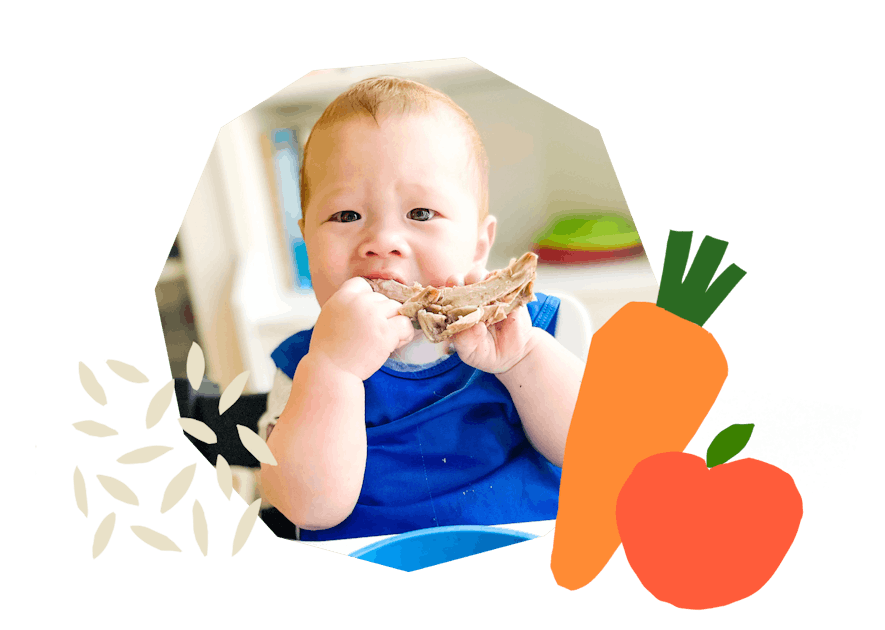
The Program Baby-Led Weaning with Katie Ferraro
A step-by-step digital program for starting solid foods safely and navigating the original 100 FIRST FOODS™ meal plan with baby-led weaning.
 EXPERT-LED, PROVEN APPROACH TO EATING REAL FOOD
EXPERT-LED, PROVEN APPROACH TO EATING REAL FOOD CONCISE VIDEO TRAININGS TO MASTER BABY-LED WEANING
CONCISE VIDEO TRAININGS TO MASTER BABY-LED WEANING 100 FIRST FOODS DAILY MEAL PLAN WITH FOOD PREP VIDEOS
100 FIRST FOODS DAILY MEAL PLAN WITH FOOD PREP VIDEOS
Baby-Led Weaning for Beginners Free Workshop
Is your baby ready to start solid foods, but you’re not sure where to start? Get ready to give your baby a solid foundation to a lifetime of loving real food…even if you’re feeling overwhelmed or confused about this next stage of infant feeding.
Get baby-led weaning recipes and tips delivered to your email inbox.

